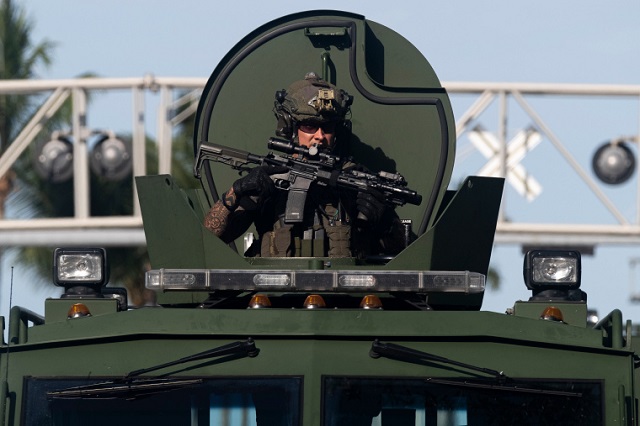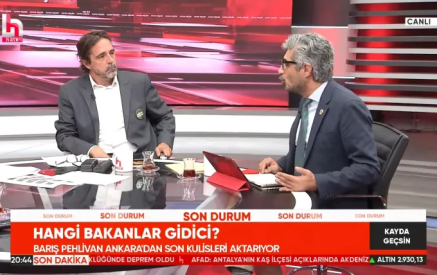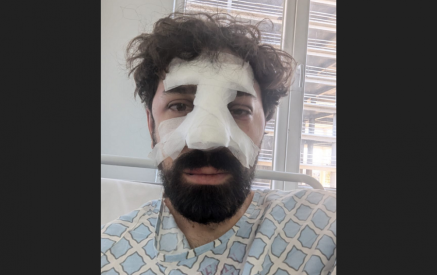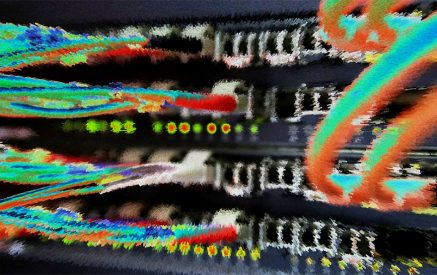CPJ. When St. Louis Post-Dispatch photographer David Carson was covering protests against police violence in Ferguson, Missouri in 2014, he said other reporters often asked him what it was like to get teargassed night after night. These days, he told CPJ, he rarely gets asked that question: “Now all of my journalist friends have been teargassed.”
Tear gassings, rubber bullet shootings, equipment damage, injuries, and at least one blinding: the last three and a half months have proved a harsh initiation to covering street protests for a generation of U.S. journalists. The U.S. Press Freedom Tracker, of which CPJ is a founding member, is investigating more than 780 alleged press freedom violations during protests sparked by the death of George Floyd, a Black man, in police custody on May 25.
As the Black Lives Matter protests drive a national conversation about police, they have also shined a light on a trend impacting press freedom for several years: Law enforcement officers are increasingly militarized in their response to protests, which creates a more hostile reporting environment.
Police militarization is partly fueled by the federal 1033 program which provides surplus military items – including rifles, helicopters, and tactical vehicles, but also more banal items like microwaves and office equipment – to local, state, and federal law enforcement agencies. According to the Defense Logistics Agency at the Department of Defense (DOD), 8,200 law enforcement agencies are enrolled in the program, which has transferred roughly $7.4 billion worth of equipment since 1990. (As the Defense Logistics Agency notes, that figure is based on the initial acquisition value, not the current value.)
Read also
As heavily militarized police patrol today’s protests, it’s unclear just how much of their equipment has come via the federal program, though an NBC News investigation traced at least 17 military style vehicles in various cities to agencies enrolled in it. The 1033 program is just one of several ways the government helps outfit local law enforcement agencies.
“We’ve been involved in Afghanistan for so many years now and as they draw down, it just creates more surplus equipment,” said Mickey Osterreicher, general counsel at the National Press Photographers Association (NPPA) and a veteran photographer. “The government has been offering it up and the police departments have been buying it up.”
Osterreicher said he observed a ramp up in military-style gear used at demonstrations between the 2011 Occupy Wall Street protests against inequality and the 2014 protests in Ferguson in response to the fatal police shooting of a Black teenager, Michael Brown. At that protest – where journalists were detained and hit with rubber bullets and tear gas, as CPJ documented – he said he was struck by the number of military-style vehicles and uniforms.
Images from Ferguson of police perched on tactical vehicles, looking through rifle scopes to monitor the crowd, or firing non-lethal weapons that left protesters with massive, painful bruises, helped spark a national outcry against the program. In 2015, then-President Barack Obama issued an executive order to restrict certain parts of the equipment transfer with bipartisan support. Two years later, President Donald Trump reversed the executive order, doing away with much of the program’s oversight. Now, the Black Lives Matter protests have refocused attention on it, leading human rights groups to once again call on Congress to end the program.
“The 1033 program signals to state and local agencies…that these items should be playing a role in community policing,” said Kanya Bennett, a senior legislative counsel with the American Civil Liberties Union, who works on criminal justice issues. “Essentially, by the federal government making weapons of war available to local police departments, you’re going to see agencies incorporate these weapons into their day-to-day routines when they interact with the community,” she told CPJ.
Proponents of the 1033 program argue that heavier equipment could prove necessary during a natural disaster and more benign gear such as cookware and gloves, is just being recycled. However, these arguments overlook the harm that is being done by this program and the message that its existence sends, said Bennett.
“To the argument that there are microwaves, there are filing cabinets, there are these mundane items that can be acquired through 1033 too, it’s not just an MRAP [mine-resistant ambush protected vehicle], that’s fine,” she said. “But I don’t think the 1033 program needs to exist in order to figure out how the Department of Defense can recycle a microwave.”
Carson, the St. Louis Post-Dispatch photographer who has also been covering Black Lives Matter protests in Ferguson, said that police militarization is about more than equipment – it’s about attitude. “When we talk about militarization of the police, I think of it more as a mindset, rather than just gear. It’s how you operate,” he said.
Or, as Osterreicher put it, “The problem is, when you’re dressed for a war, then sometimes you’re looking for a battle. Having officers geared up [in body armor], especially in the summer in the heat…you’re going to get cranky, which could impair your judgement.”
Osterreicher said he has witnessed an increase in aggressive tactics against reporters covering protests, such as “catch and release.”
“Police arrest journalists because they want to stop them from what they are doing which is reporting on these matters and they could care less whether the charges stick or not after the fact,” Osterreicher said. Instead, the journalists are detained, sometimes their equipment is confiscated, and they are prevented from documenting protests.
The escalation of police aggression toward the press and protesters coincides with a dangerous and years-long shift in the way the public — and many in the government — view the press, said Marisol LeBrón, assistant professor in the Department of Mexican-American and Latina/o Studies at the University of Texas at Austin, and the co-editor of Policing the Planet: Why the Policing Crisis Led to Black Lives Matter.
“There is a larger kind of issue that is specific to the media, and to journalists in particular, around how they are being positioned both by law enforcement and the larger political establishment as actually a threat to democracy, as a political agent that is looking to destabilize the current administration; that is a real danger,” said LeBrón. “[A] Trump supporter’s T-shirt called for lynching of journalists, and police are not immune to that rhetoric.”
Mike Parker, a retired Los Angeles County sheriff who runs media trainings with police, had a different explanation for the reason so many journalists have found themselves in harm’s way during the Black Lives Matter protests. “One of the biggest mistakes reporters make is not wearing visible markings,” he said. “If the police don’t know who you are, how could they possibly be able to distinguish you from rioters?”
Tracker testimonies, however, show that many journalists did identify themselves as press — whether on their person or verbally — and that law enforcement targeted them anyway.
Even if a police department has military equipment, it doesn’t have to use it, said Osterreicher. He said police should show up in “soft uniforms” and leave the riot gear on reserve. This sets officers up to deescalate.
But leaving equipment in the closet isn’t enough, said Stuart Schrader, associate director of the Program in Racism, Immigration, and Citizenship at Johns Hopkins University.
“I think it would be very easy to end the 1033 program, and not just end it, but take back what the Pentagon has supplied,” said Schrader, who is also the author of Badges Without Borders: How Global Counterinsurgency Transformed American Policing. “In many cases, that gear remains officially/technically property of the Pentagon, property of the DOD. So, they can take it back, they are authorized to take it back, and they should.”
CPJ’s written message to the DOD, sent via the department’s website, went unanswered. CPJ also called a phone number for media requests but was unable to reach anyone or leave a message.
Not all the equipment comes from the Pentagon; in many cases, the police departments themselves make purchases, or it’s funded by private foundations, said Schrader. Because there are thousands of police departments across the U.S., “every city needs to pass an ordinance that says no tear gas, no flash bangs, no military style trucks,” says Schrader.
Meanwhile, reporters who observed police militarization during 2014 in Ferguson are now advising their colleagues on how to navigate similar scenes across the country. That includes Whitney Curtis, another St. Louis-based freelance photographer, who has covered both Ferguson and the 2020 Black Lives Matter protests.
Curtis told CPJ she has internalized some crucial lessons in the six years between the two movements, like the futility of arguing with law enforcement over press access. In a tense situation, she said she tells other reporters, it’s better to just “find another way around whatever obstacle that’s been created.”
Covering protests, she’s developed a kind of sixth sense for when things will escalate between protesters and police. “As an observer, you learn this rhythm from covering protests night after night but you still have to be prepared for the unexpected. A peaceful situation can suddenly become chaotic and violent.”
By Katherine Jacobsen/CPJ U.S. Research Associate, Coral N. Negrón Almodóvar/CPJ Patti Birch Fellow for Data Journalism, and Lucy Westcott/James W. Foley Emergencies Research Associate
Committee to Protect Journalists




























































